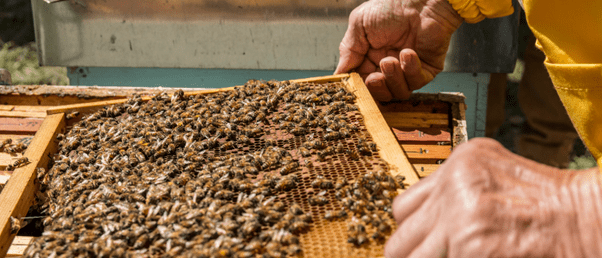It’s time to fight back: honey bees vs. Varroa mites

A new breed of honey bees, named “Pol-line”, has been selectively bred to identify and remove the Varroa mite from their colonies, which has been a major threat to honey bees for half a century.
The invasive Varroa mite has spread to all continents, except Australia and Antarctica, and is the main threat to honey bees. Over the past 20 years, researchers from The University of Exeter (UK), universities in Louisiana (LA, USA), and the US Department of Agriculture (USDA; USA) have selectively bred “Pol-line” bees that are resistant to the mite.
This study took place across Mississippi, California, and North Dakota (all USA), where beekeepers move tens of thousands of colonies yearly for large-scale agricultural pollination. Colony survival over winter is vital for beekeepers, as bees are in high demand in the early spring for pollinating high-value crops like almonds. This mite-resistant honey bee was found to be twice as likely to survive the winter, with a 60% survival rate, compared to 26% of the standard honey bee, and also reduced mite numbers in the hives.
To prevent extensive losses of the standard honey bee, beekeepers currently need to use chemical miticide treatments, which are not sustainable. “So far, new methods to control the mites – and the diseases that they carry – have had limited success, and the mites are becoming increasingly resistant to chemical treatments. It’s a ticking time bomb,” said Thomas O’Shea-Wheller (University of Exeter), who led the study.
 Newly discovered marine microbe contribute to carbon cycling
Newly discovered marine microbe contribute to carbon cycling
A single-cell marine microbe produces mucus to feed on its prey in a process that also sequesters carbon, and could be a secret weapon to combat climate change.
O’Shea-Wheller explained that bees managed by humans are mostly “decoupled” from natural selection so are less likely to develop resistance to mites and viruses as they would in the wild. The Varroa mite originates in Asia, meaning that European honey bees (which are the most common species kept for pollination) lack their own resistance mechanisms as they have not evolved alongside the mites.
Researchers found that bees with certain genes check their hives for mites and display a behavior known as Varroa-sensitive hygiene; however, commercial bees tend to lack this behavior. The mites reproduce in the larvae cells, and bees with Varroa-sensitive hygiene can identify infested larvae and remove them, preventing mites from reproducing in their hives. This means colonies can be bred to protect themselves from Varroa mite infestations, ensuring large colony sizes, consistent honey production and pollination.
“The great thing about this particular trait is that we’ve learned honey bees of all types express it at some level, so we know that with the right tools, it can be promoted and selected for in everyone’s bees,” commented Michael Simone-Finstrom (USDA), one of the authors on the study. Additionally, this is a natural and sustainable solution, that doesn’t need external chemical or human intervention.
The researchers also looked at viruses associated with Varroa mites, finding that Varroa-resistant colonies had lower levels of the three major viruses (DWV-A, DWV-B, and CBPV). However, these viruses were not strong predictors for colony losses when studied away from the levels of mite infestations, indicating that the mite is more harmful than these viruses.
“The viruses are clearly important, but we need to take a step back and be rigorous in delivering the best practical outcomes, because if you control the mites, you automatically control for the viruses that they transmit,” explained O’Shea-Wheller.
O’Shea-Wheller acknowledged that bee breeding and testing is time-consuming and costly; however, breeding these mite-resistant bees will be more cost-effective in the long term and provides a sustainable solution to the global Varroa infestation.